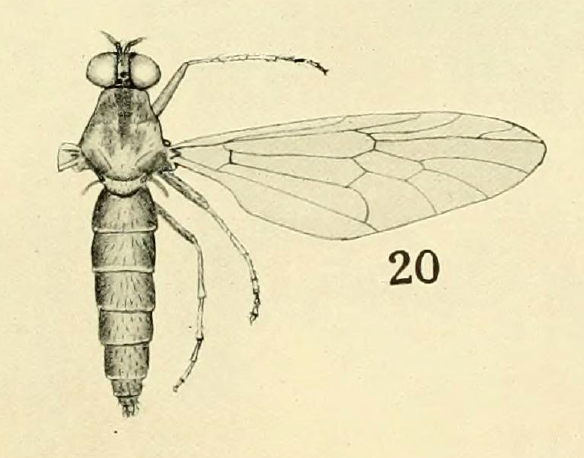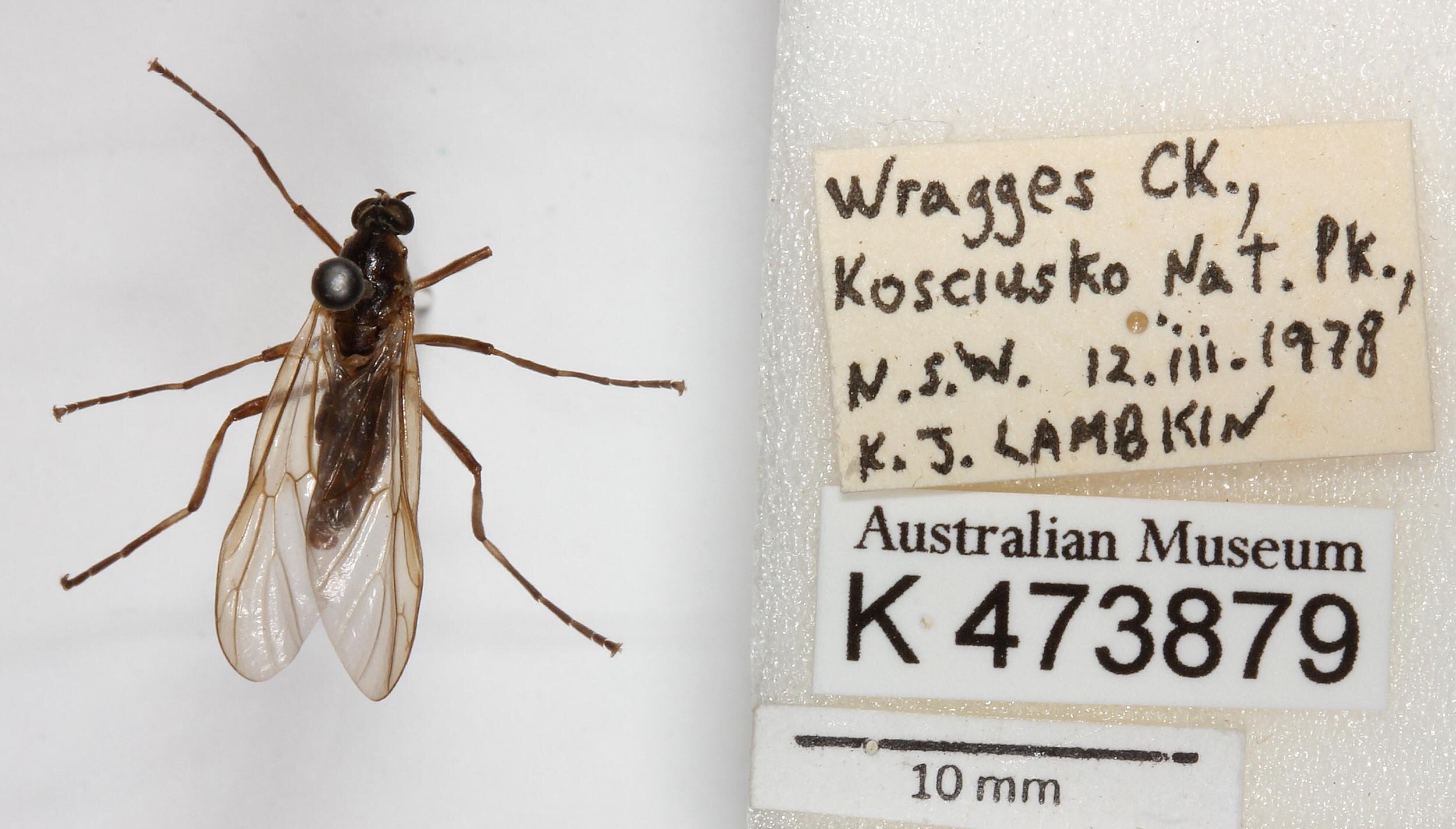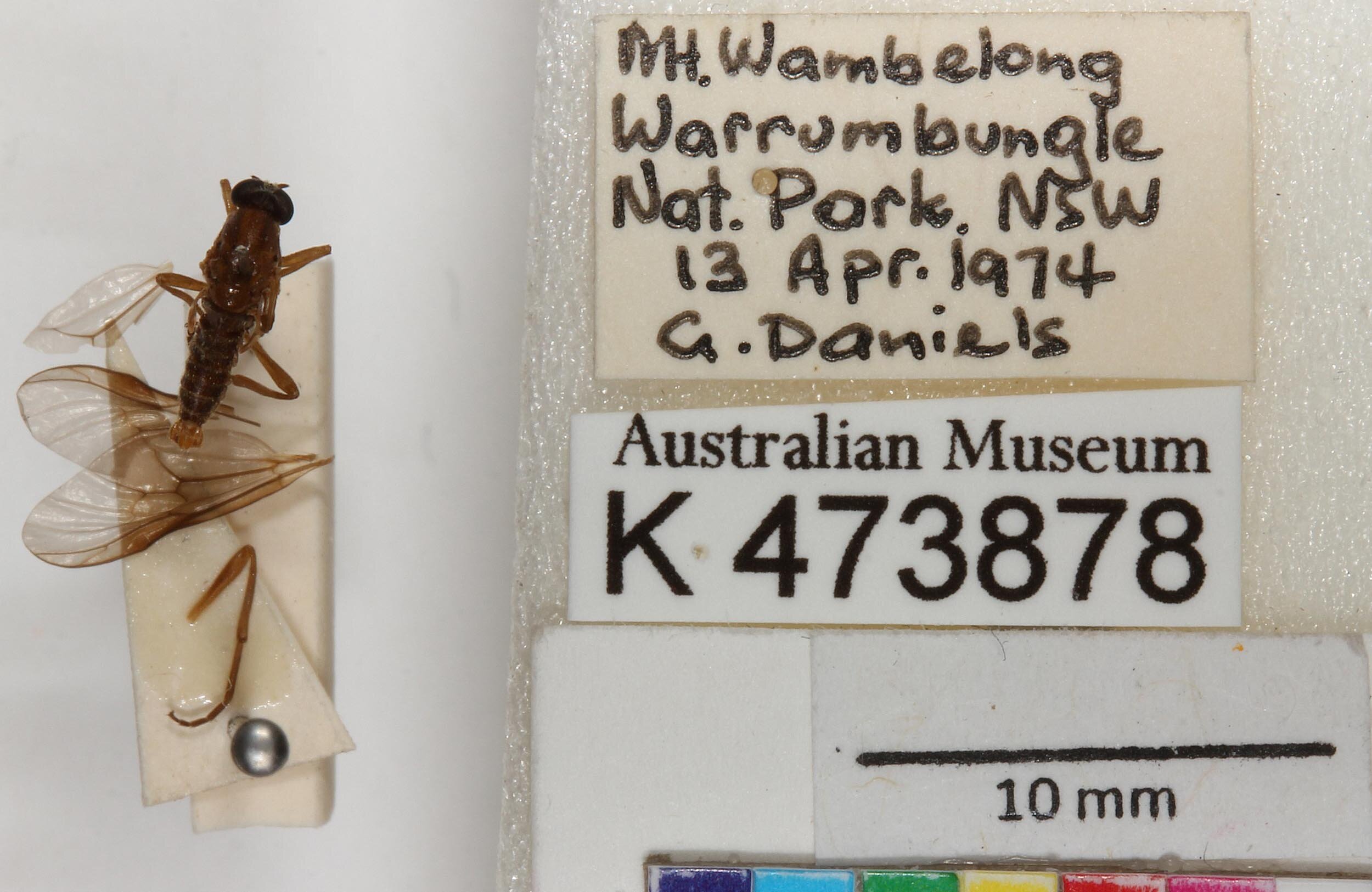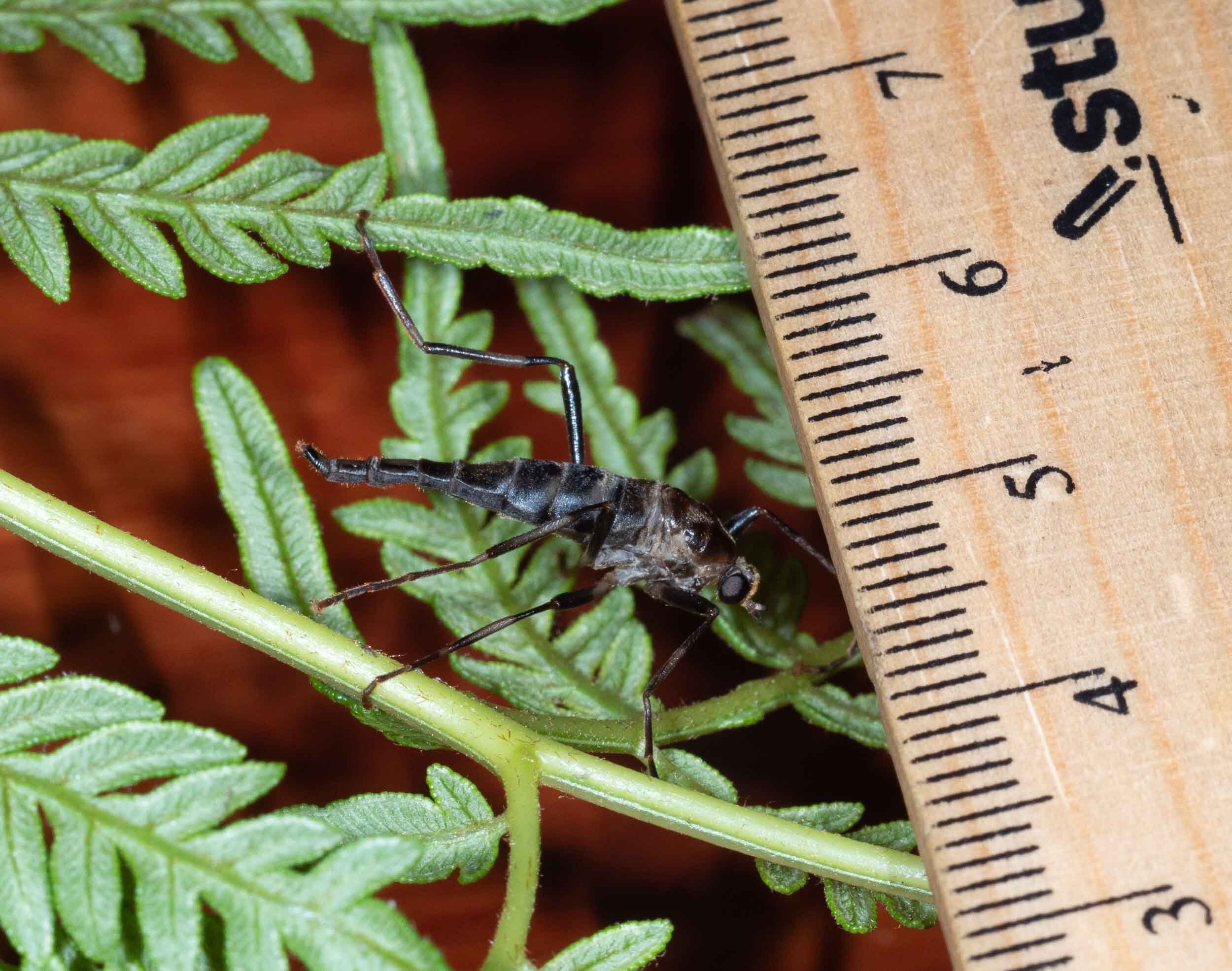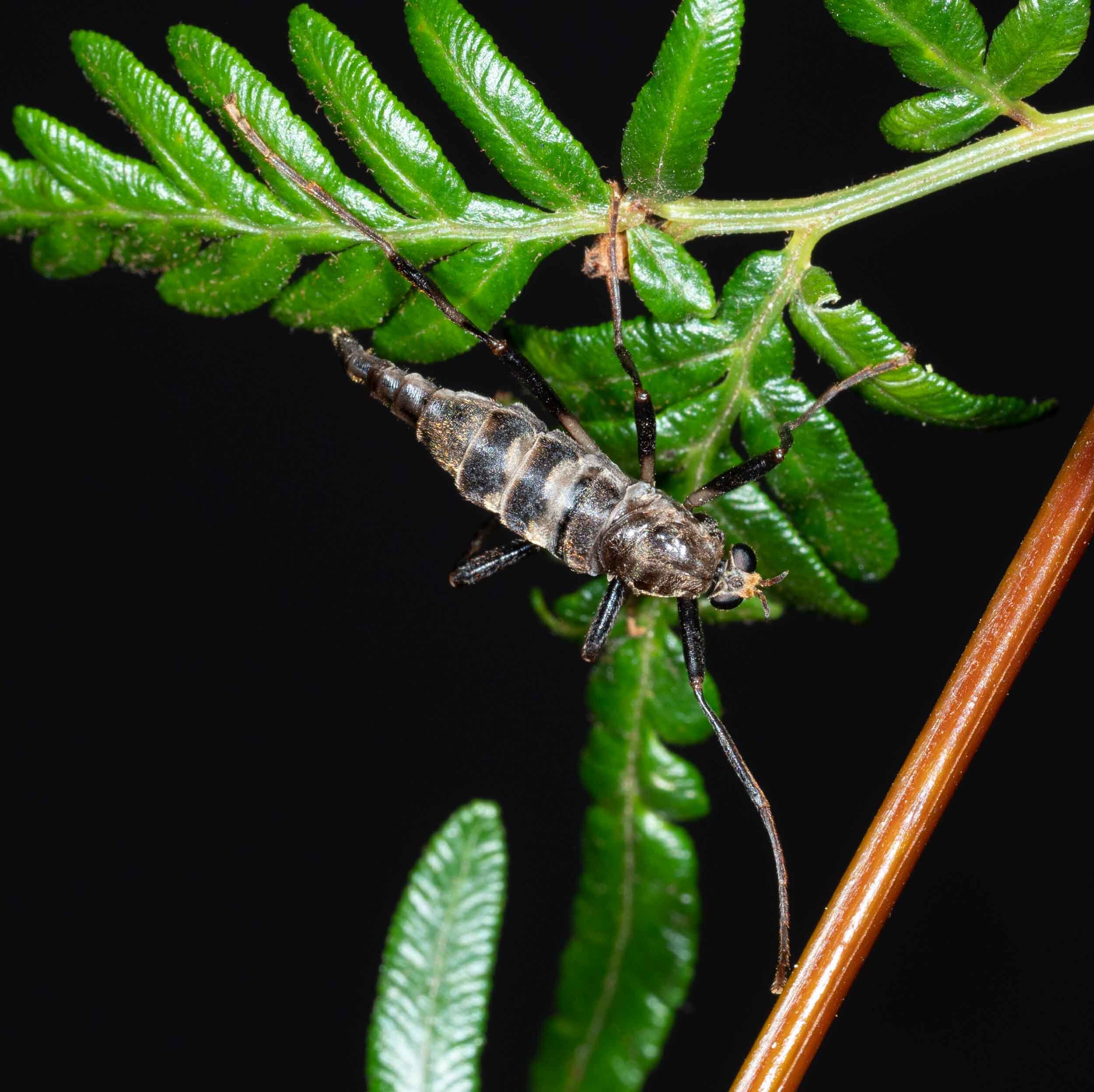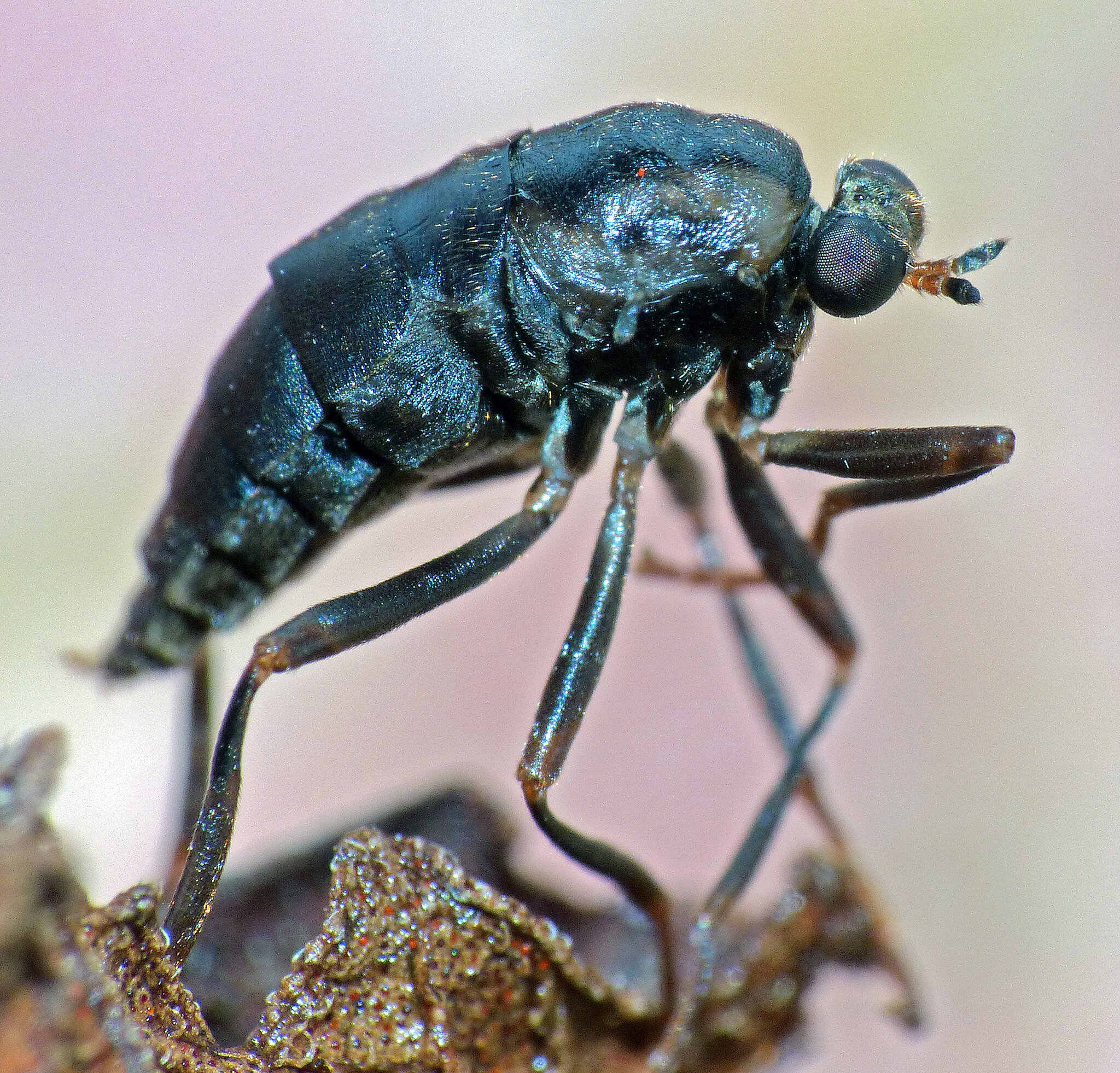Boreoides subulatus (Soldier Fly)
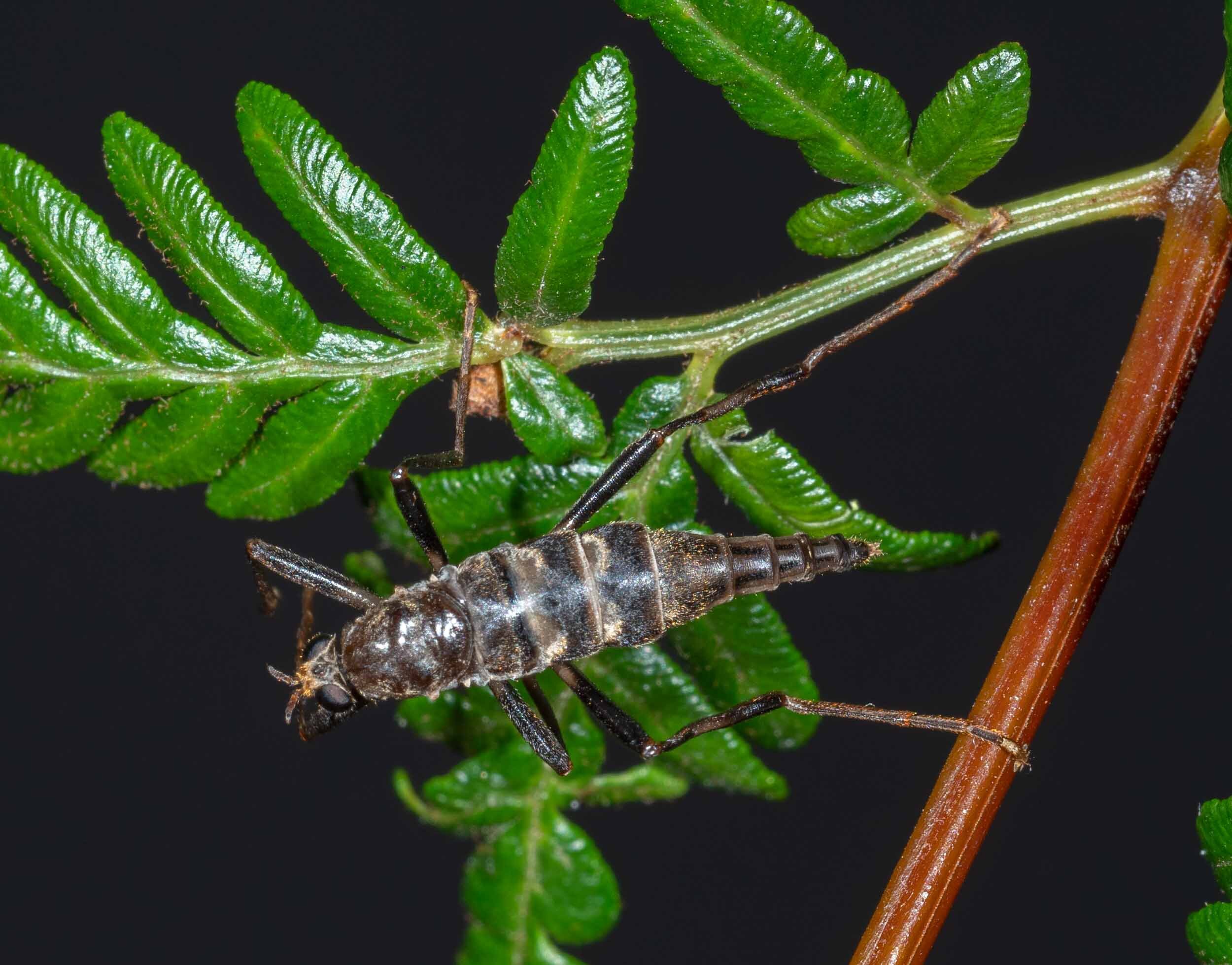
Workbook
Male seen and photographed on front door at Southern Forest Life, 11 May 2020, 21:50.
Body length ~ 11mm
We were seeing quite a number of these insects around the house around that time.
https://atlasoflife.naturemapr.org/Sightings/4259176
i conclude that this is a male Boreoides subulatus as my images match the images of this species on ALA as well as the original description and drawings in the Hardy 1920 paper.
There are only two other described species in the genus, viz. Boreoides tasmaniensis and Boreoides machiliformis.
I have not been able to find any description of male B. machiliformis in the literature.
Original description of male Boreoides subulatus in Hardy, G.H. 1920 “A revision of Chiromyzini (Diptera)” Proc. Linn. Soc. NSW 45, 532-542
“Male is winged, more or less uniformly coloured brownish and is slender in build. The front (frons) is one fifth the width of the head, parallel-sided and bulges slightly. The ocellar tubercle is very slightly raised, and anterior to this a median depression reaches to the antennae. The antennae have their two basal joints equal in length, and the third joint twice the length of the basal joints united, and obscurely annulated. The face is small and the oral aperture is shallow and wide, and beneath it can be detected the minute mouth between the small palpi. The thorax and scutellum are normal, the former often stained with fuscous. The abdomen is rather long and slender, depressed, and consists of seven segments. The exposed genitalia conform in shape to those of other species of the Beridoniae. The legs are light brown in colour, long and slender. Body length 8-10mm.”
Images from Hardy, 1920
Images of male Boreoides subulatus from ALA - Australian Museum specimens
ALA image of male Boreoides tasmaniensis
I have not read the original description of B. tasmaniensis. However this image from Simon Groves on ALA of the male shows that it has a uniformly dark abdomen, which differs from the brown abdomen of B. subulatus.
There are significant differences in wing venation and other morphological features such as spacing of the eyes between Boreoides subulatus and the related genus Chiromyza, which rule out my fly being the latter genus.
Female Boreoides subulatus found by Kerri on Old Bridge Road, Wonboyn and Southern Forest Life in garden on 17 May, 2020.
My identification of this insect is based on the similarity between my images and images on ALA from trusted sources (museum images, including the holotype in Melbourne Museum), as well as original descriptions and drawings in Enderlein, 1921 and Hardy, 1920.
Old Bridge Road female
Southern Forest Life female - has a plumper abdomen than the Old Bridge Rd insect
Original description of female Boreoides subulatus in Hardy, G.H. 1920 “A revision of Chiromyzini (Diptera)” Proc. Linn. Soc. NSW 45, 532-542.
“The female is much inflated and apterous. The frons is about 1/3 the maximum width of the head, is uniformly wide and bulges considerably. The ocellar tubercle is but slightly raised, and anterior to this there is a pair of large prominences divided by a deep median depression which reaches the base of the antennae; the frons contains conspicuous yellowish pubescence anteriorly. The antennae are situated low on the head and close together; the two basal joints are about equal in length; the third joint is equal to the basal joints together; the apical half of the third joint is obscurely annulated and three or four divisions can be seen. The oral aperature is shallow and wide, and it contains a tubercle occupying a larger portion of its area; below the tubercle, a minute mouth can be detected between the small palpi. The thorax anteriorly is as wide as the head, but widens considerably towards the abdomen. It is glabous and shining, but contains a litttle golden tomentum dorsally. The scutellum is flatttened so that it lies like a plate upon the metanotum, which is also depressed but wrinkled, and separates the suctellum from the abdomen. Laterally the thorax is normal, and ventrally it is almost untirely concealed by the coxae. The wings and halteres are obsolete, but there are minute prominences indicating the position where these appendages should be. The abdomen normally is large and distended, but in some specimens it is shrivelled and no larger than that of the head and thorax combined. There are four distended segments followed by three elongate narrow segments, at the apex of which the ovipositor protrudes and contains a pair of cerci. IN all the specimens the abdomen shows tendencies to shrivel, and in some specimens dark bands are to be seen on the three baxal segments and dark longitudinal stripes on the apical segments. In the holotypes the apex of the first dorsal segment has a thin tranverse apical band, the second and third segments have a broader central band the fourtj to seventh segments have a pair of black stripes. The ventre has tracings of corresponding bands and stripes more or less visible; in dark specimens these markings are more or less obliterated. The legs are long and have their anterior coxa very broad, covering half the length on the ventral side and almost touching the intermedoiate coxae which ar normal. The posterior coxae are situated at the distance of their woen widteh from the intermediate coxae and are normal; the legs contain a minute pubescence. Body length 15-25mm.
Our females match Enderlein’s description of Boreoides subulatus (Psegmoptera aurifrons) better than Boreoides machiliformis (Psegmoptera machiliformis).
Original description of female Boreoides subulatus (then called Psegmoptera aurifrons) in Enderlein, G. 1921 “Über die phyletisch älteren Stratiomyiidensubfamilien…” Mitteilungen aus dem Zoologischen Museum in Berlin 10, 150-214
“Head black with thick, grey ‘frost’. Frons wide, as long as it is wide, with very thick, velvety, rather long, vertically oriented, yellow-gold hairs, which are strongly parted in the midline, so that the medial furrow is evident. The temples (occiput) is reasonably narrow, becoming narrow below and disappearing in the middle of the eye border. Palps and proboscis rust coloured. Antennae rust coloured, the final third of the flagellum is black. Rudiments of wings and halteres are light rust-yellow coloured. Thorax blackish-brown, furrows are brownish-yellow. The ventral side has a grey ‘frost’ and yellowish pubescence, with flat hairs. The dorsal thorax is very large, with a shallow median furrow, and three transverse furrows (at the posterior side of the first and second thrids as well as in front of the scutellum). All of these furrows lack sharp borders. The abdomen is dark brown; tergite I has reasonably sharp, fine, thick, irregular transverse ridges which become less obvious in the midline; tergite II has finer cross ridges, while tergites III-VIII has wider ridges. Tergite I with less thick and longer, flat gold-yellow hairs, the posterior third completely naked; tergites II and III with very thick, flat, short gold-yellow hairs on a yellowish background, in the posterior half with similar dark brown hairs, the rest of the abdominal pubescence is weakly yellowish. Sternite I naked, matt and almost lacking transverse ridges, the rest of the sternites strongly ridged and with yellowish, weak pubescence. Legs black-brown, tarsi bright rust coloured. Claw tips black. Body length 18mm, abdomen length 14.5mm, head length 1.3mm, head width anteriorly 3mm, antenna length 1.25mm, femur I length 5mm, thorax length 4.5mm, femur II length 5mm. Greatest width of thorax 3.5mm, length of femur III 6mm, frons width 0.7mm.” Collected in Australia.
Original description of female Boreoides machiliformis (then called Psegmoptera machiliformis) in Enderlein, G. 1921 “Über die phyletisch älteren Stratiomyiidensubfamilien…” Mitteilungen aus dem Zoologischen Museum in Berlin 10, 150-214
“Differs from Boreoides subulatus (aurifrons) in the following respects: Frons somewhat shorter than it is wide, with less thick upright yellowish hairs. Antennal flagellum grey-black, with the exception of the first segment. Lacking a median longitudinal furrow on the dorsal thorax and the three transverse furrows are less obvious. The transverse ridges on the first abdominal segment are thicker, more pronounced and uniform in size, including in the midline. Hairs are brownish and only yellowish on the sides. Tergites II and III possess a narrow anterior margin with thicker, yellow hairs, which is unbroken in the midline. The posterior border of these yellow flecks of hair form a flat bow on each site of the midline in every segment. Coxae are dark rust yellow, claws are black with the basal halves red-yellow. Body dimensions very similar to B. subulatus.” One female collected in Adelaide.
Images of the third Boreoides sp. B. tasmaniensis from Simon Groves on ALA show a different body colouration to our females, ruling out this as a possible identity for our species.
Females of the related genus Chiromyza, are winged (see Figures of Chiromyza sp. from Hardy, 1920).
This is a workbook page … a part of our website where we record the observations and references used in making species identifications. The notes will not necessarily be complete. They are a record for our own use, but we are happy to share this information with others.







